HEALTHCARE INTEROPERABILITY
- Home
- portfolio
- Healthcare
- HEALTHCARE INTEROPERABILITY
Real-time Data Exchange Gateway Transitions Legacy Systems with Interoperability
Industry: Healthcare
Problem :
Healthcare Organizations are under enormous pressure to adapt to the quickly evolving dynamics of healthcare reform, which are driving the need to use and deploy resources as efficiently, effectively, and reliably as possible. On the front burner for business executives and IT managers are the compliance deadlines, including Administrative Simplification and Accountable Care Provisions, which must be managed and embedded into current processes without disruption to avoid costly penalties – all while keeping current systems running.
One of the primary challenges to managing this ongoing integration effectively is the growing complexity of current systems architecture, which has usually evolved into a scattered network of vertical transactional applications all accessing the same Data Source set, but rife with redundant processes, maintenance, and development needs. These problems are only exacerbated by the new compliance requirements that must be continually updated across all of the vertical external and internal applications. Not to mention the new data, collaboration, and market challenges… For IT managers, it sometimes seems the equivalent of changing a tire while you are driving.
Solution:
A Deploying EIX’s Real-Time Interoperable Data Exchange (RIDE), a middleware solution, helps overcomes this challenge, by allowing Health Organizations to process any and all transactions through a single, secure service, tracking and monitoring all information requests in a centralized repository. This helps Health Plans streamline their workflows and processes – and dramatically reduce infrastructure costs to meet their requirements. RIDE will interact dynamically with unlimited trading partners, providers, and payer’s internal applications
Adoption of EIX can be modular so that organizations can prioritize a quick deployment to their immediate requirement (i.e. by specific transaction need, Eligibility/Claims/Payment, ICD-10, 5010, Electronic Health Record, etc.), as they phase out legacy systems and processes. And since RIDE can process any transaction type through the centralized system, organizations can continue to take advantage of the streamlining efficiencies of our modern design at their own pace. And since our single horizontal Gateway functions as a Gateway and a Translator to your Data Source, it dramatically reduces the redundant vertical costs associated with upgrades, reporting, testing, and new services.
Result :
Adoption of, and transition to, RIDE will allow your organization to meet compliance and collaboration requirements head-on, maximizing ROI, providing lower costs, improving process efficiencies, and building the right foundation to easily expand capabilities and capture the tremendous opportunities Healthcare Reform will ultimately provide (improved value of data capture, quality of care, mobile capabilities, wellness, etc.).
Just as importantly, it will enable your organization a modern technology alternative which can be used in parallel as you sunset your costly, wasteful legacy applications that are no longer sustainable going forward.
RIDE leverages modern, centralized technologies to meet the challenges of cost, complexity, innovation, and interactions required for the modern Healthcare organization. The core value of our single, centralized approach is to streamline the administrative, clinical, and financial transaction flow between healthcare providers, health plans, and members. The cost savings realized are substantial and can be realized within a few years, even considering legacy transitioning.



